{Bruges, Belgium}
Do you remember the movie In Bruges from a few years back? (Ok, I checked and it’s about 17 years back. Where does the time go, anyway?) In it two hitmen, Ray and Ken, are sent to Bruges by their boss Harry for a few weeks after a hit gone wrong. Ray has been tasked with the murder of a priest, and he accidentally kills a young boy in the process. It’s an unacceptable mistake, and Harry tells Ray and Ken that he’s sending them to Bruges for a while - to lay low and to enjoy some sightseeing in the meantime.
Ken loves Bruges, but Ray, it turns out, is bored out of his skull. Soon enough, boss Harry tells Ken that he’s actually in Bruges to kill Ray as punishment for his mistake - and that he’s only sent them to the city so that Ray can have a beautiful experience before he dies. To which Ken responds that it’s a nice thought but, unfortunately, Bruges isn’t really Ray’s thing. Outraged Harry, played by Ralph Fiennes, responds:
“It’s a fairytale town, isn’t it? How’s a fairytale town not somebody’s thing? How can all those canals and bridges and cobbled streets and those churches, all that beautiful fairytale stuff, how can that not be somebody’s thing?
Is the swans still there? How can swans not be somebody’s thing, eh?”1
I mean, how can swans not be somebody’s thing? It’s impossible.
Swans have been in Bruges since the 15th century. local legend will tell you that swans were first brought here as a sort of punishment. Maximilian I of Austria - who had assumed control of Bruges after the death of his wife Mary of Burgundy - floundered in his first few years as ruler, and by the end of the 15th century was highly unpopular with the city’s residents. On one visit to Bruges, the citizens captured Maximilian and had him imprisoned for four months. During his imprisonment, he witnessed the arrests and executions of some of his closest companions, including one Pieter Lanckhals. When Maximilian escaped, he ordered 101 swans to be brought to Bruges in honor of his friend Lanckhals, which in English means Long-Neck.
Bruges, he said, would fall into ruin if the swans were ever removed from the canals.
(Honestly, if you’re going to be cursed with something, swans aren’t really that bad, are they?)
If you, yourself, are not inclined to believe in curses, that’s ok. A more prosaic and - ok - possibly more logical theory is that swans were brought to Bruges almost a century earlier, as a symbol of the city’s power and wealth. It could have been a last-ditch effort on Bruges’ part to assert its importance, as by the end of the 15th century the city had begun to fall into a decline that would last for almost four hundred years.
The “Golden Age” of Bruges stretched from the 12th century to the 15th century, during which time it was the most important port city in Northern Europe and a leading trading post of the Hanseatic League. Although Bruges lies several miles inland from the North Sea, the narrow Reie River provided ready access to the sea - and provided the water to fill the city’s canals. During the 15th century, the river started to fill with silt, making commerce more difficult - and this, combined with some sketchy leadership (see: Maximilian), contributed to the city’s long decline.
Bruges didn’t die off, though, it just hibernated. When travel as a tourist trade began to grow in popularity in the mid-to-late 19th century, Bruges became one of Europe’s first great tourist attractions. Visitors discovered a city that progress (and the Industrial Revolution) had mostly bypassed - a medieval city that was remarkably well-preserved. The resulting tourist capital provided an opportunity for the city’s renaissance, and thankfully Bruges choose to invest in its past. The 20th century saw widespread conservation and restoration of its architectural and cultural heritage.
Today, of course, the popularity of Bruges is at its peak. Statistics show that on any given day - particularly during summer’s high season - there are more tourists on its streets than locals.
It’s a day in late May when I arrive - an impossibly glorious, blue-skies-and-puffy-white clouds day. The city is filled with tourists, but it doesn’t feel crowded - it feels serene and calm and beautiful. Like a fairytale. Or a swan.
It’s the weekend after Ascension Day, actually - which means, sadly, that I’ve just missed the Procession of the Holy Blood, an annual festival that has taken place in Bruges since 1291. Called “Brugges Schoonste Dag” - the Most Beautiful Day in Bruges - in Dutch, the procession is a big deal: a celebration of civic pride as well as a chance to honor the city’s most precious relic.
The Relic of the Holy Blood - a piece of cloth, said to be stained with the blood of Christ - was purportedly preserved by Joseph of Arimathea after the Crucifixion (it seems he was more careful with this cloth than he was with the Holy Grail). There are, of course, conflicting stories about how it came to Bruges, but these days it is the city’s most precious relic, housed in an eponymous basilica - The Basilica of the Holy Blood.
The hand-painted banners of the Procession are still hanging, and they wave above my head as I walk down the Oude Burg, the oldest street in Bruges. I am headed for the Church of Our Lady. I may be too late to see the city’s most precious relic, but I’m not going to miss one of its greatest artistic treasures.
The Church of Our Lady has a distinctive Flemish flavor, with striking black and white marble architectural details and deep wood decoration. Tucked away in a chapel on the right-hand side is a sculpture so beautiful that it was stolen not only by Hitler, but by Napoleon, too.
She is the Madonna of Bruges, by Michelangelo. Purchased in Florence in 1504 and brought to Bruges by brothers Alessandro and Giovanni Moscheroni (who sound awfully Italian, but who were actually wealthy merchants from Bruges), the Madonna was the only Michelangelo sculpture to leave Italy during his lifetime. The Bruges Madonna is small (just about 50”), but exquisite. Featuring a serene Mary and a youthful, almost playful Jesus, the sculpture is a kind of bookend to the artist’s Pietà, completed just two years earlier.
The Madonna has been installed in this chapel since she first came to Bruges in 1504, with two exceptions. In 1794, she was sent to Paris by Napoleonic troops, where she stayed on display at the Louvre until Napoleon’s defeat at Waterloo in 1815. And, more famously, she was stolen by Nazi troops during World War II, smuggled out of Bruges in between mattresses on the back of a Red Cross truck. She was thankfully recovered in the vast underground salt mines at Altaussee, Austria, along with hundreds of other Nazi-looted masterpieces, and returned home to Bruges.
It is a special kind of treat to a Michelangelo sculpture not in a museum, but in the very chapel for which she was created.
Madmen and Michelangelo have a long history. In 1972 a Hungarian man named Laszlo Toth attacked the Pietà with a hammer, knocking off Mary’s arm, and pieces of her face. “I am Jesus Christ - risen from the dead!” Toth yelled, as tourists scrambled to gather the broken pieces of marble, and take them home as souvenirs.
And in 1991, an Italian man broke off the toe of David at the Academia with a smuggled hammer. The same man would later deface a plaque in Florence’s Piazza della Signoria, because the wording didn’t make sense.
It is no wonder then that, if you look closely, you’ll see that the Bruges Madonna - even though she is at home - is safely guarded now in a subtle, expertly designed case of impenetrable glass.
It pricks at my conscience a little to spend so much time talking about the Italian Michelangelo when of course Bruges itself was home to some of the greatest artists the world has ever seen - not least of whom was the brilliant Jan Van Eyck. I will assuage my guilt, however, by telling you that you’ll be hearing much more about him in my next missive…
Several of Van Eyck’s masterworks are housed in the Groeningemuseum, around the corner of which is perhaps the busiest spot in Bruges - the picturesque St. Bonafacius Bridge. Despite appearances, this narrow footbridge is the newest bridge in the historic center, built in 1910. Popular with young lovers, it is said that couples who whisper to each other while standing on the bridge will be rewarded with a lifetime of love and happiness.
Single people have reason to cross the bridge, too, as legend says that the first person they see when they step off of the bridge will be the person they will one day marry. And while I haven’t seen any solid statistics to back up the veracity of this claim, you can never be too careful. Choose your gaze with care.
The poet Henry Wadsworth Longfellow visited Bruges in 1842. Like all experienced travelers, he knew that rising early was the way to go. So one summer morning, he wrote in his journal, he “rose before five and climbed the high belfry…”
The Belfry of Bruges is the city’s bell tower, first constructed in the 13th century. It is the tallest building in the historic center, and tourists still climb the 366 stairs of the tower to this day. Longfellow climbed in the quiet of the misty early morning and wrote about his experience in a poem titled, fittingly, The Belfry of Bruges:
“Visions of the days departed, shadowy phantoms filled my brain;
They who live in history only seemed to walk the earth again;”
So inspired by his view of the silent, empty medieval city, he looked down into the market square below him and imagined that scenes from history were being replayed before his eyes.
“I beheld the pageants splendid that adorned those days of old;
Stately dames, like queens attended, knights who bore the Fleece of Gold;
Lombard and Venetian merchants with deep-laden argosies;
Ministers from twenty nations; more than royal pomp and ease.
I beheld proud Maximilian, kneeling humbly on the ground;
I beheld the gentle Mary, hunting with her hawk and hound;
And her lighted bridal-chamber, where a duke slept with the queen,
And the armed guard around them, and the sword unsheathed between.”
-The Belfry of Bruges, Henry Wadsworth Longfellow
We know Maximilian, of course. The “gentle Mary” about whom Longfellow writes is Maximilian’s wife, Mary of Burgundy - a queen unknown to me until I stood in front of her tomb at the Church of Our Lady.
Mary of Burgundy, daughter of Charles the Bold of Burgundy and wife of Maximilian I of Austria. She became queen at age 19, and then married, ruled her kingdom, and had two children before dying at the age of 25 years old. She was hunting with her husband when her horse stumbled and threw her off. The horse then landed on top of her, breaking her neck.
She is interred next to her father in a grand tomb on a black marble base, memorialized forever in a gilded bronze effigy with praying hands and a pair of faithful hounds at her feet. The artist who was commissioned to create her tomb took a full seven years to finish it.
Standing at the tomb of Mary of Burgundy, tears fill my eyes. I am moved by the facts of her story of course, but it’s more than that.
I am emotional because I feel lucky. It is a privilege to be here and a privilege to learn Mary’s story. Moments like this are what I love most about travel.
I wouldn’t miss them for the world.
The internet is filled with people who will tell you that “tourist” is a dirty word. You should be a traveler, they say snobbishly, not a tourist. Or perhaps you should only engage in the kind of travel that they approve of.
I think it’s nonsense.
Overtourism is a huge concern in Bruges. The city has thankfully put a limit on the number of cruise ships that can dock nearby, and just this past year put a moratorium on the construction of new hotels, and on permits for short-term holiday rentals. And of course there are things that we can and should do on an individual basis to help alleviate the problem. Travel in the off-season if at all possible. Travel sustainably whenever possible. And most of all be respectful. Of people, of traditions, and of cultures.
But don’t ever let anyone ever make you feel bad about being a tourist. You’ll miss out on too much.
Being a tourist is the best thing in the world.
Until next time,
XO
PS - If you enjoyed this letter, please consider becoming a subscriber to have Beautiful Things delivered to your inbox. Subscriptions are free, unless you choose otherwise. If you are interested in reading my previous letters from abroad, visit my homepage: Beautiful Things. Finally, absolutely no pressure at all, but if you’d like to support my writing, I’ve added a virtual tip jar as well: you can find the “Buy me a coffee” button below. Thank you for reading!
Many, many expletives removed because this is a family-friendly newsletter.





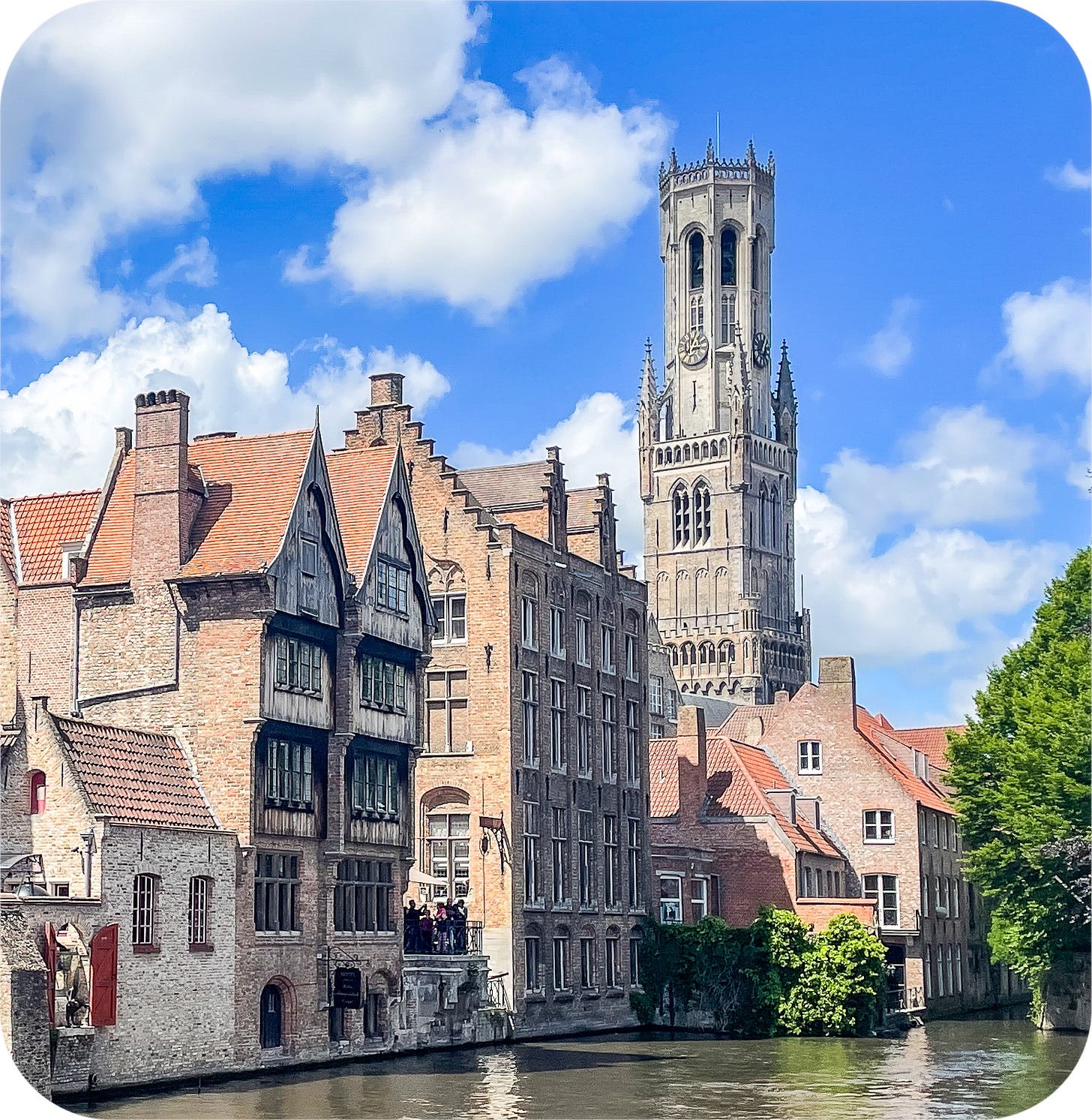



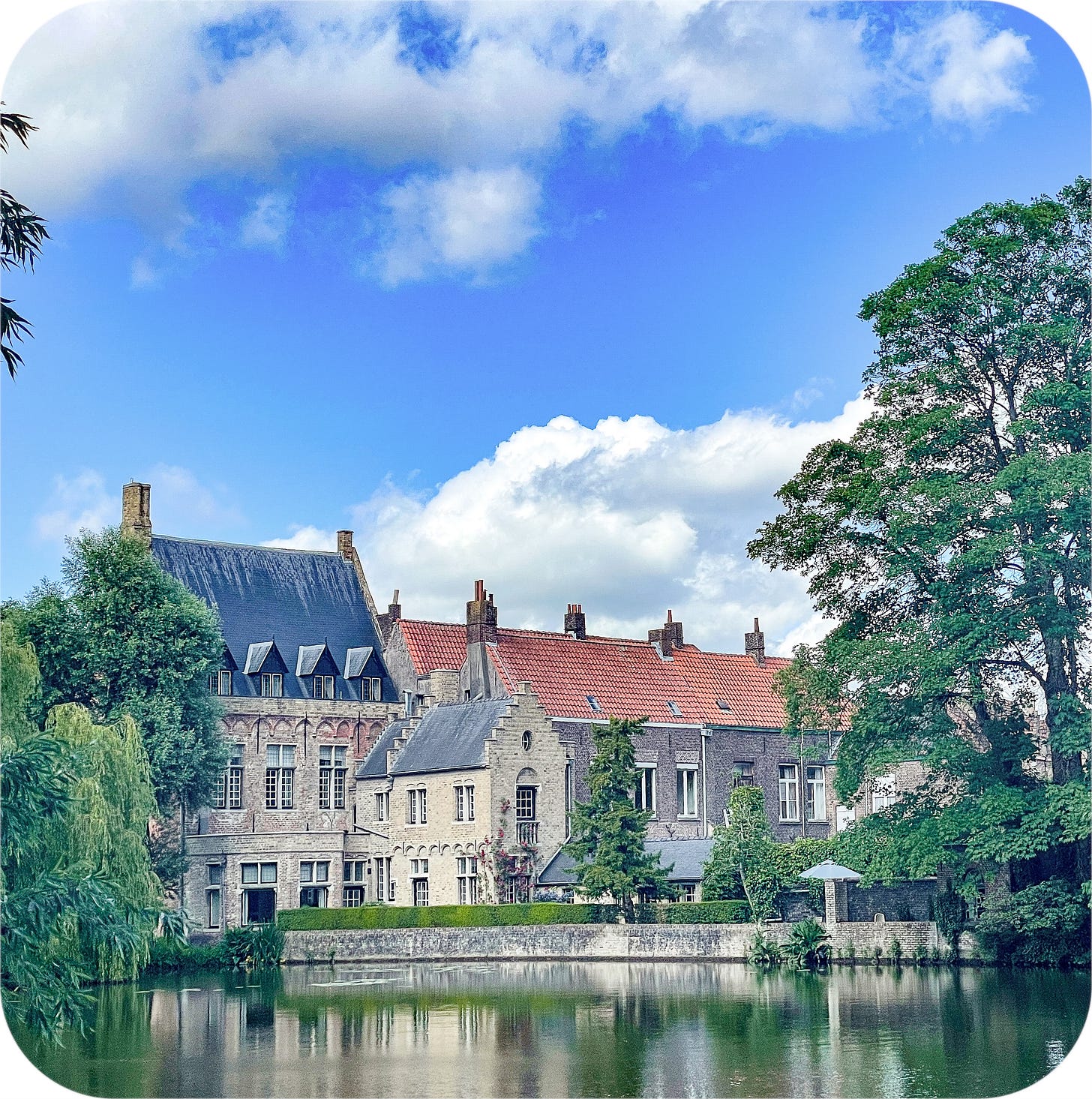
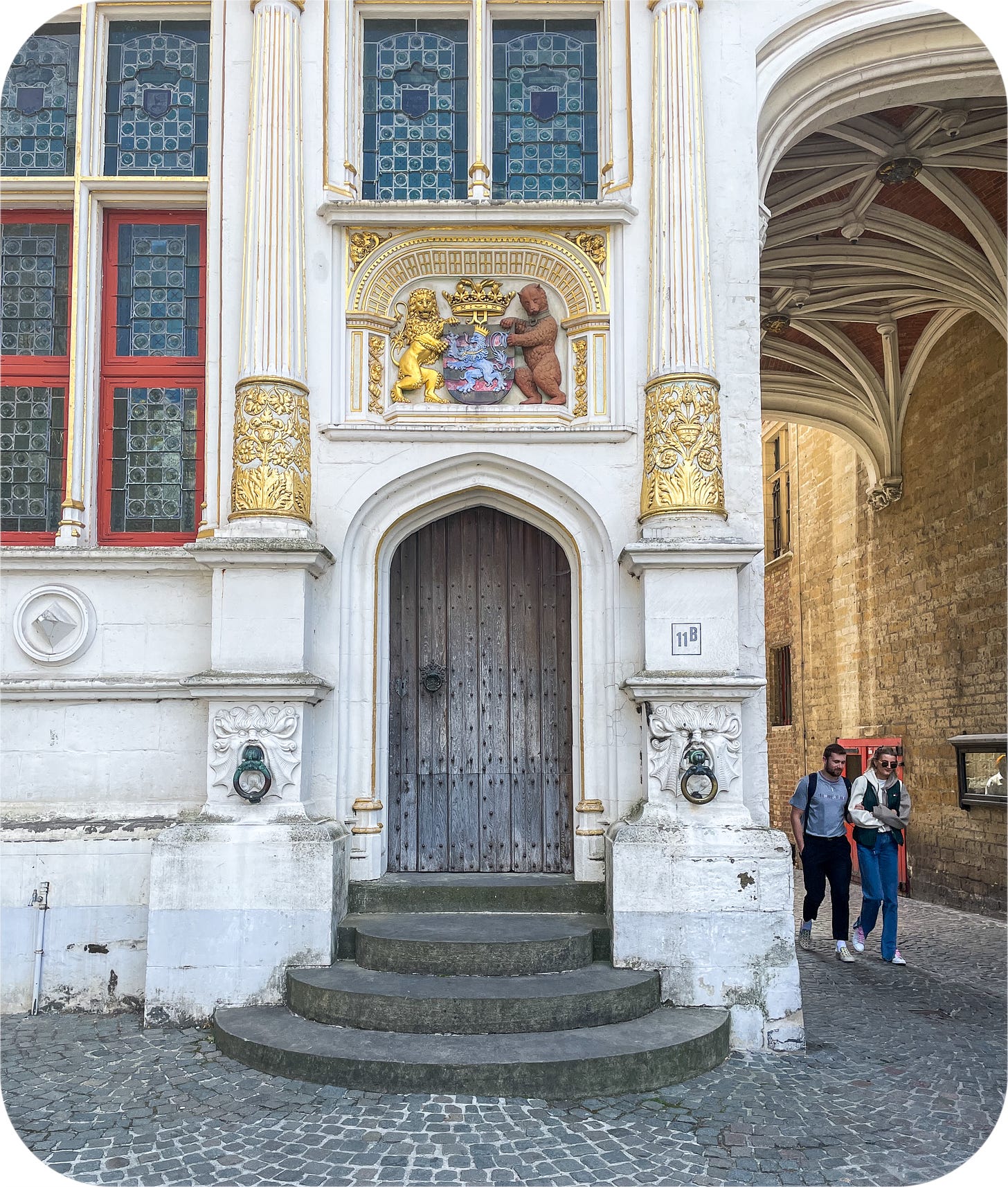



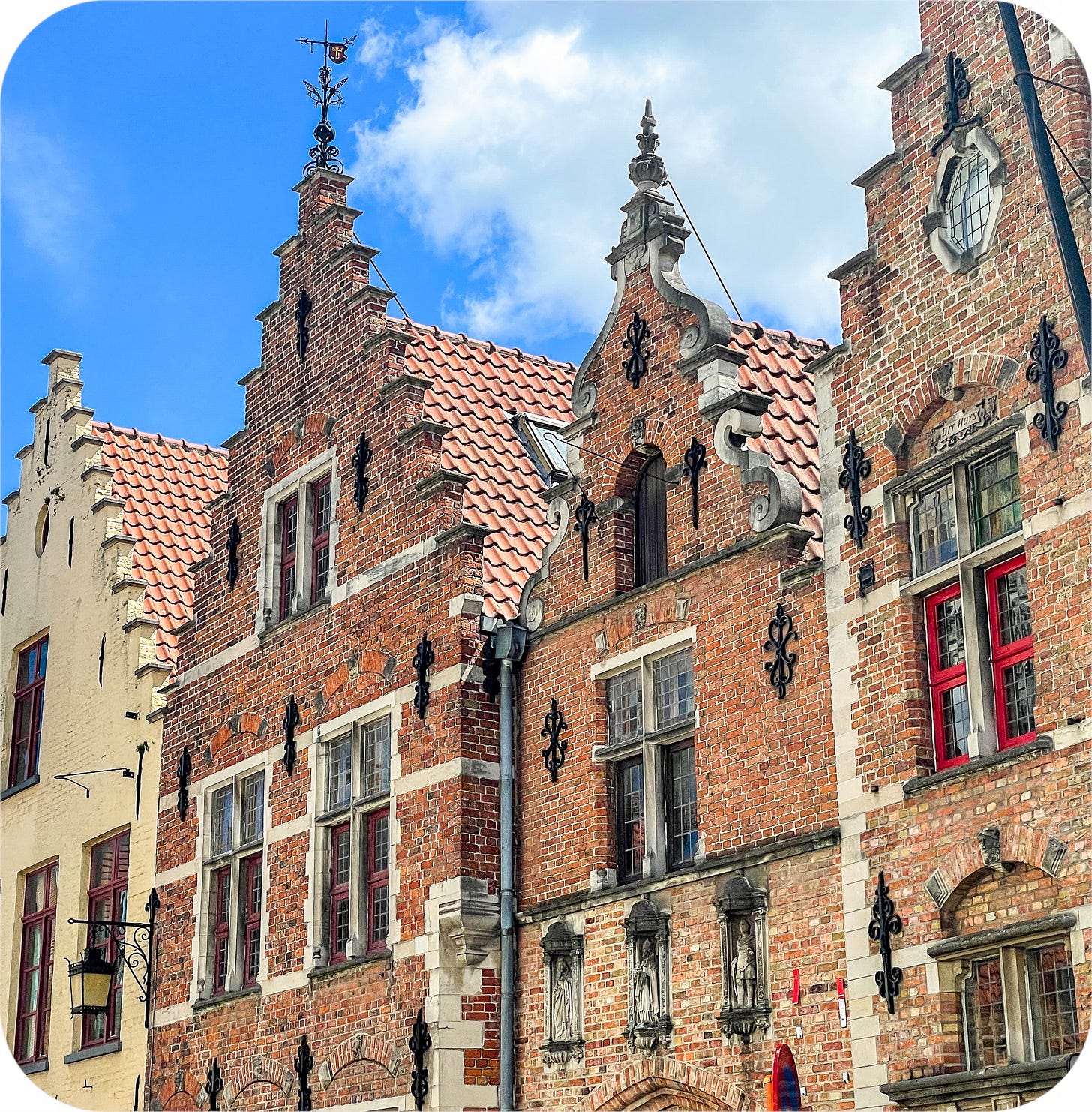
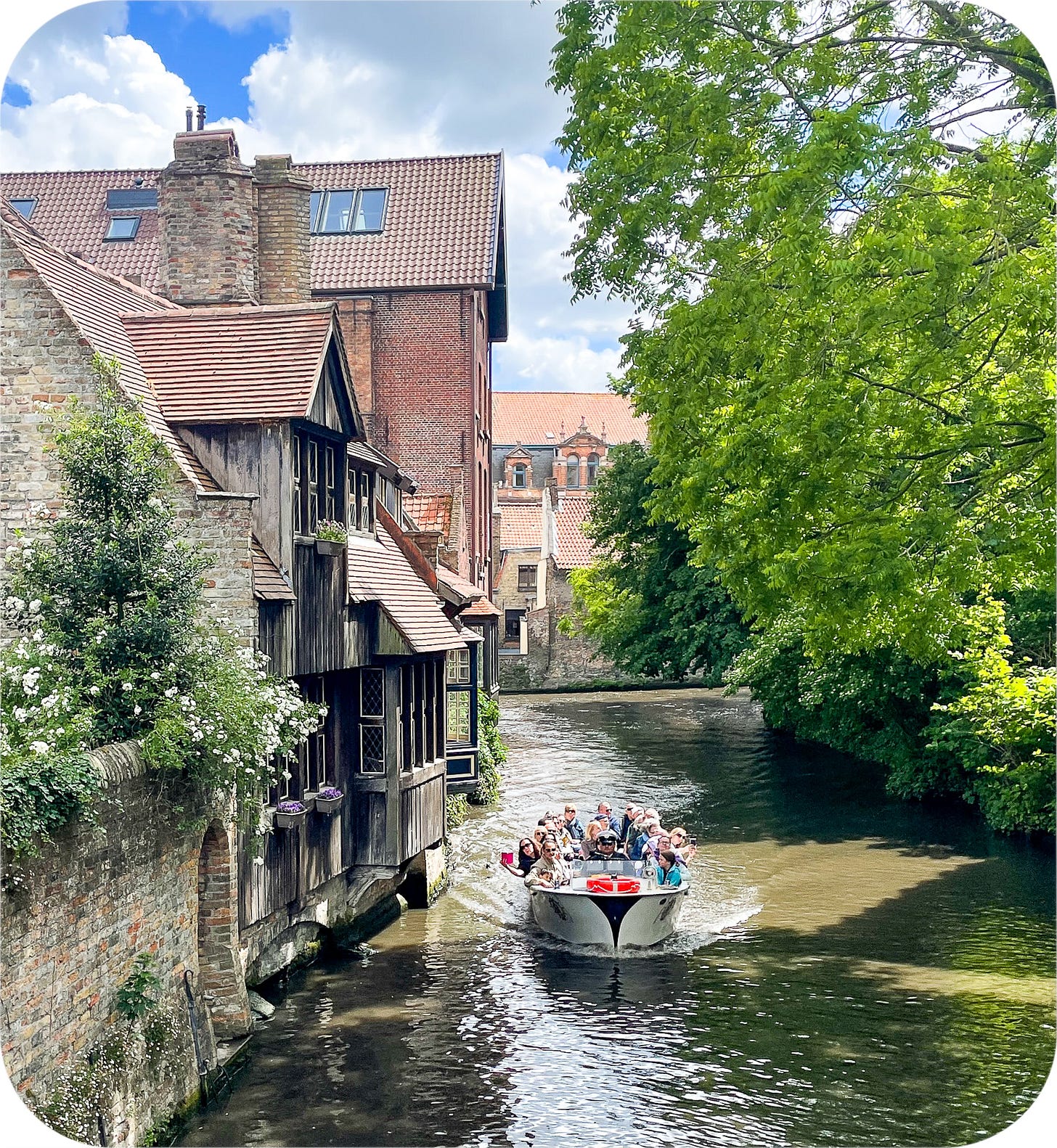

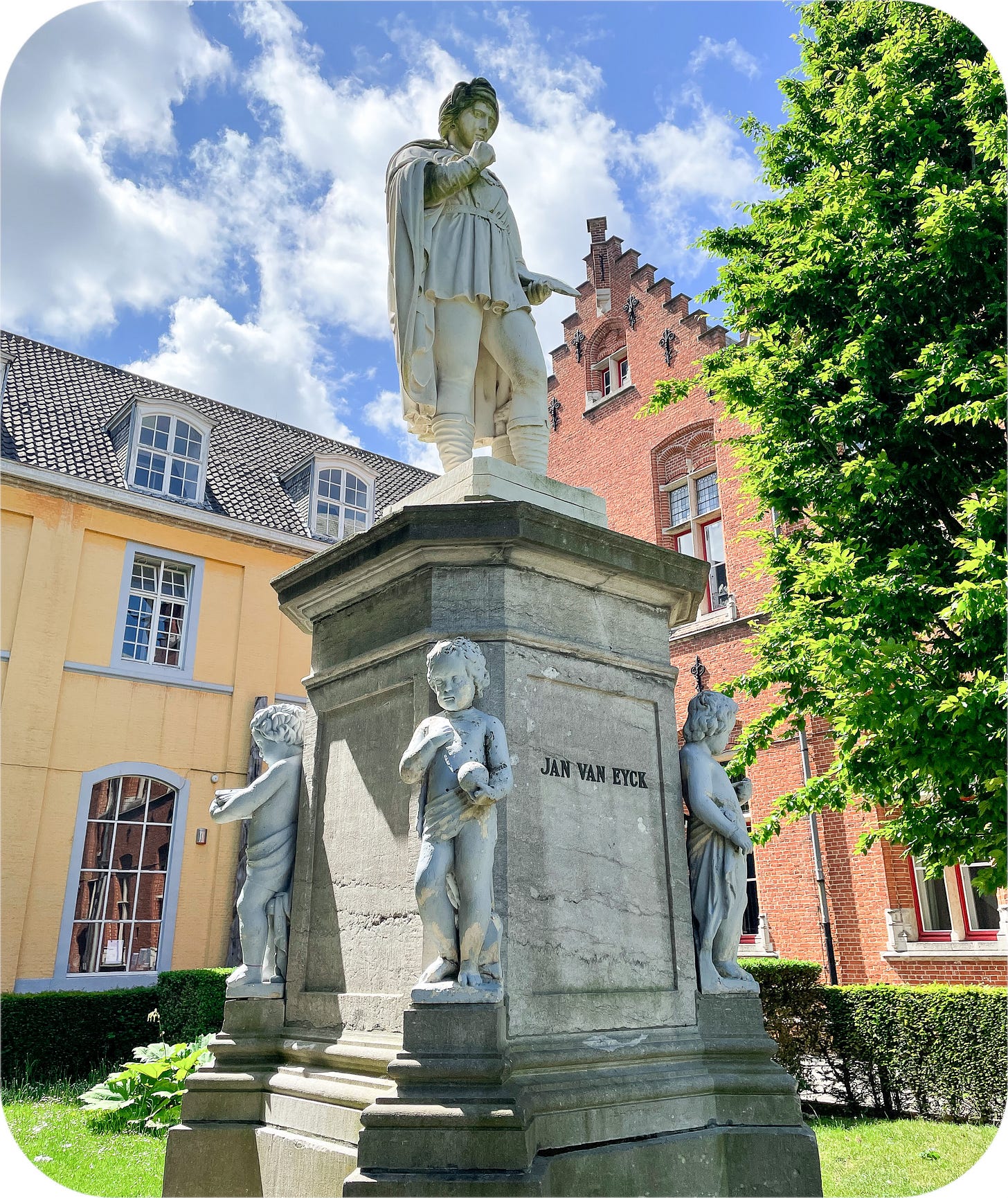

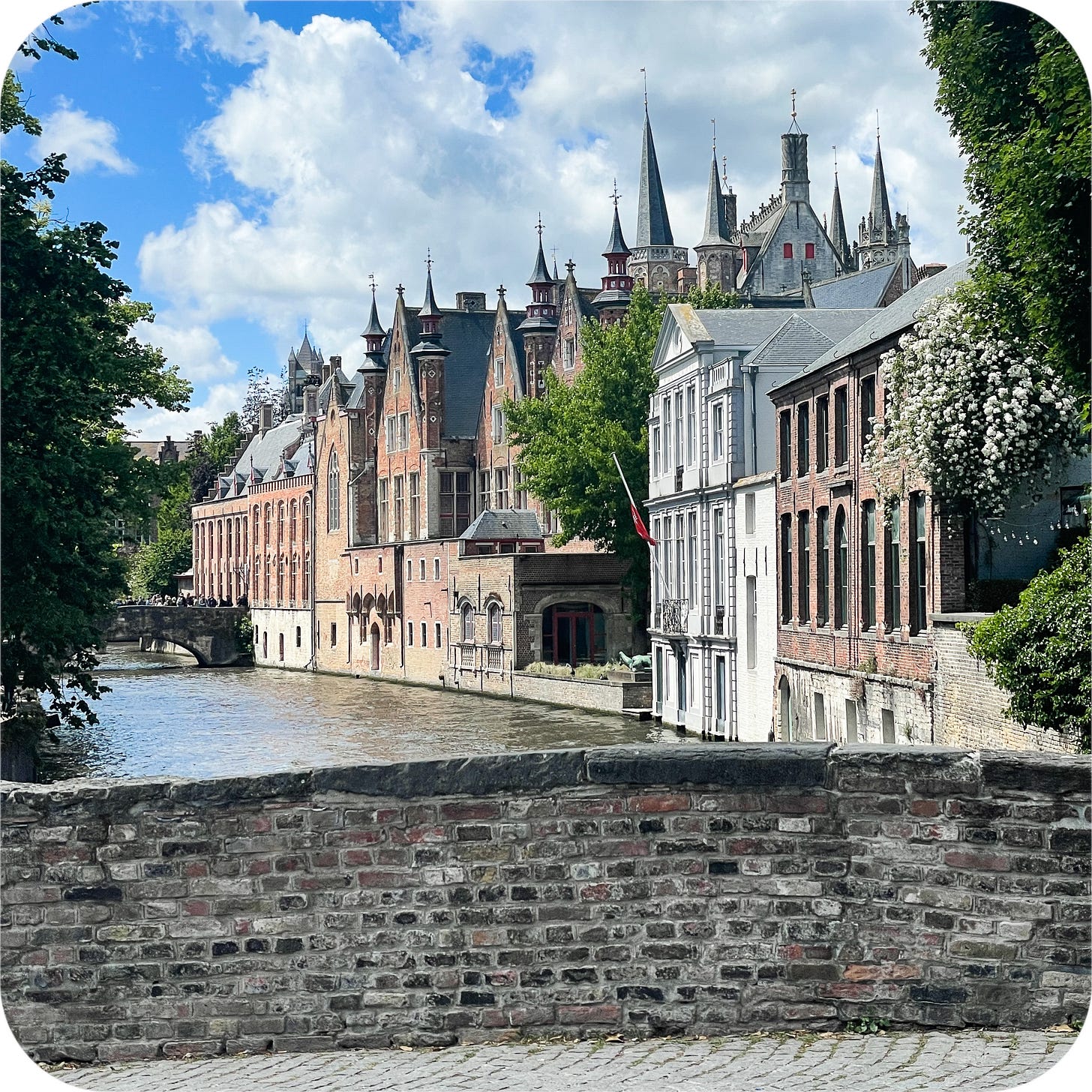
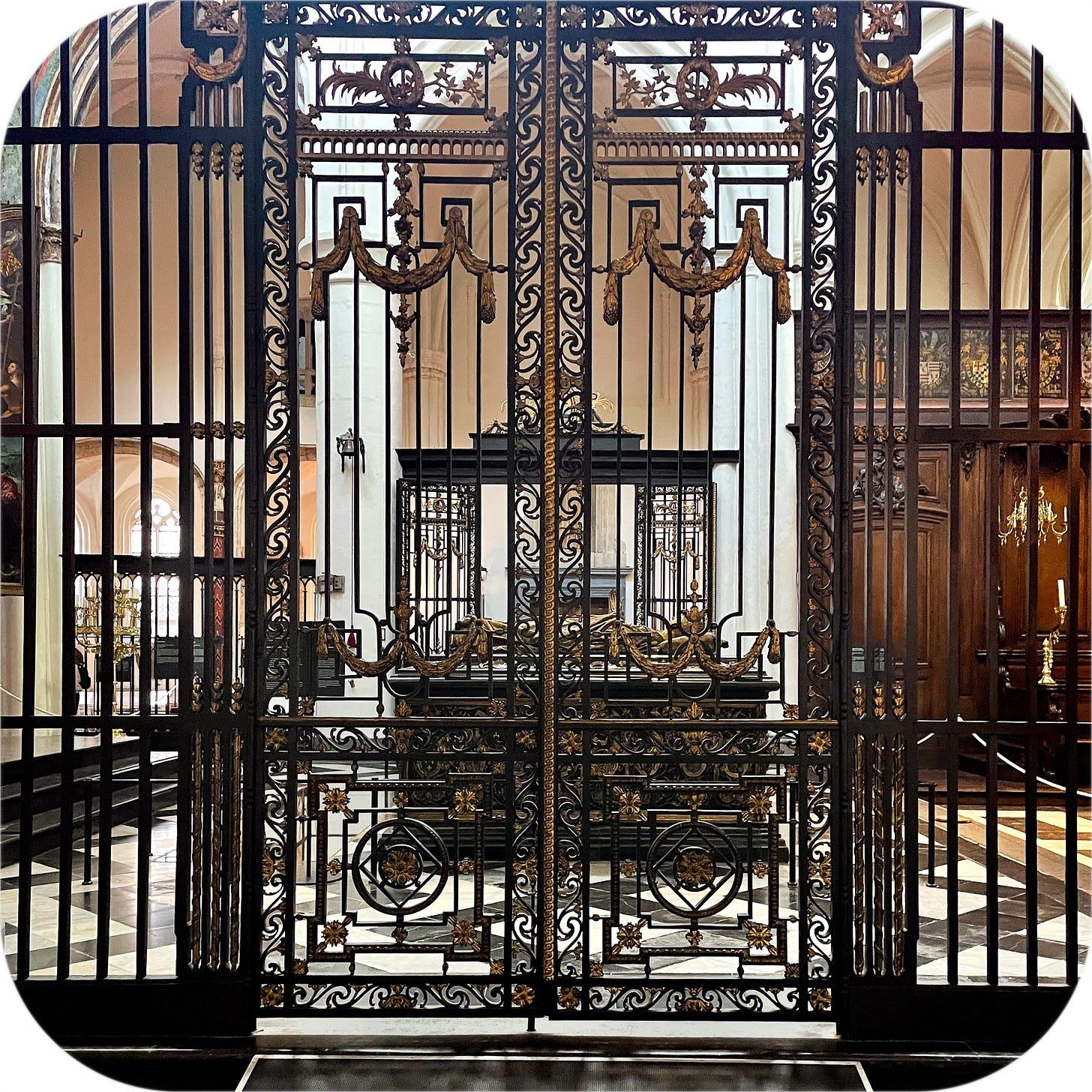

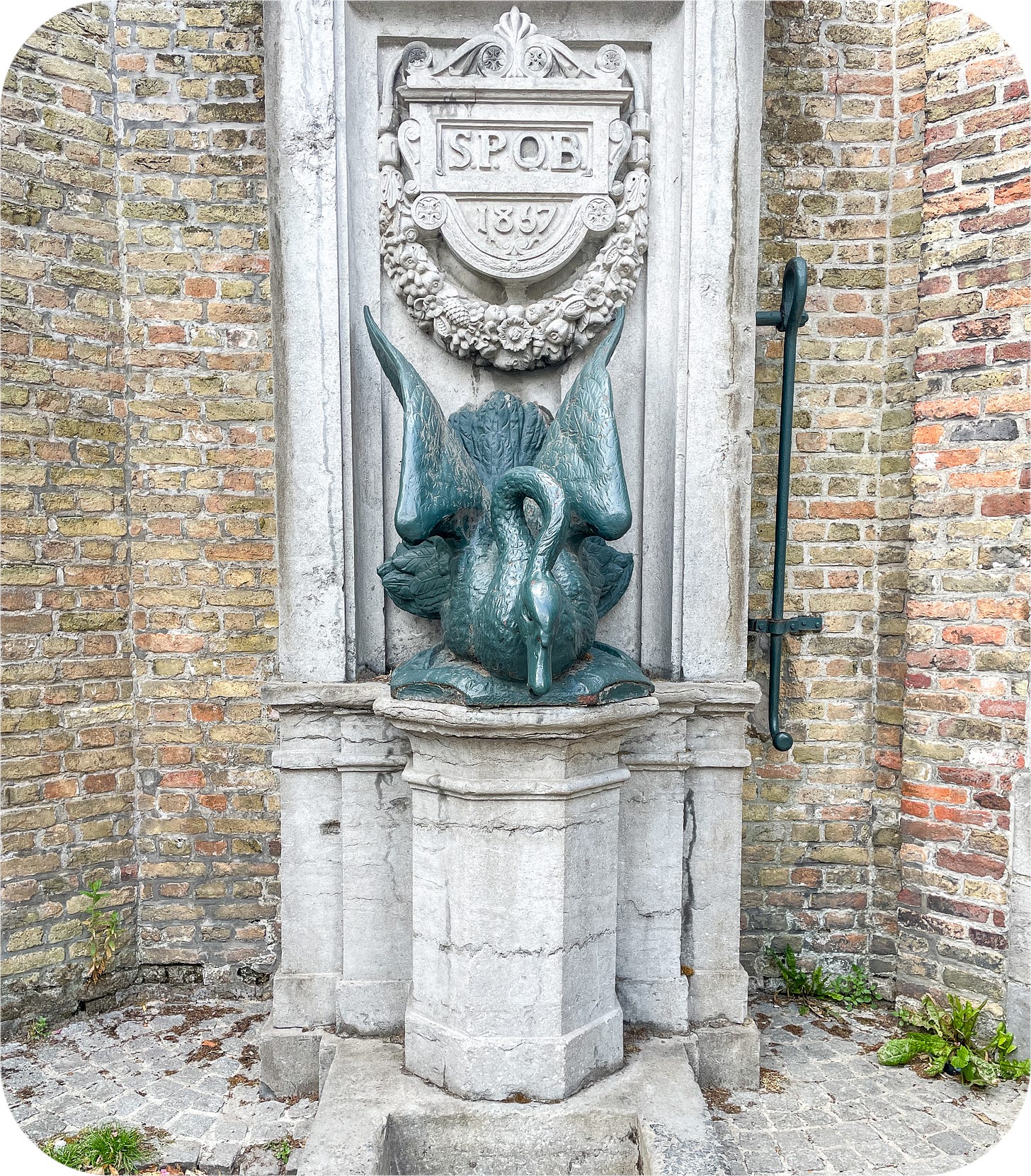


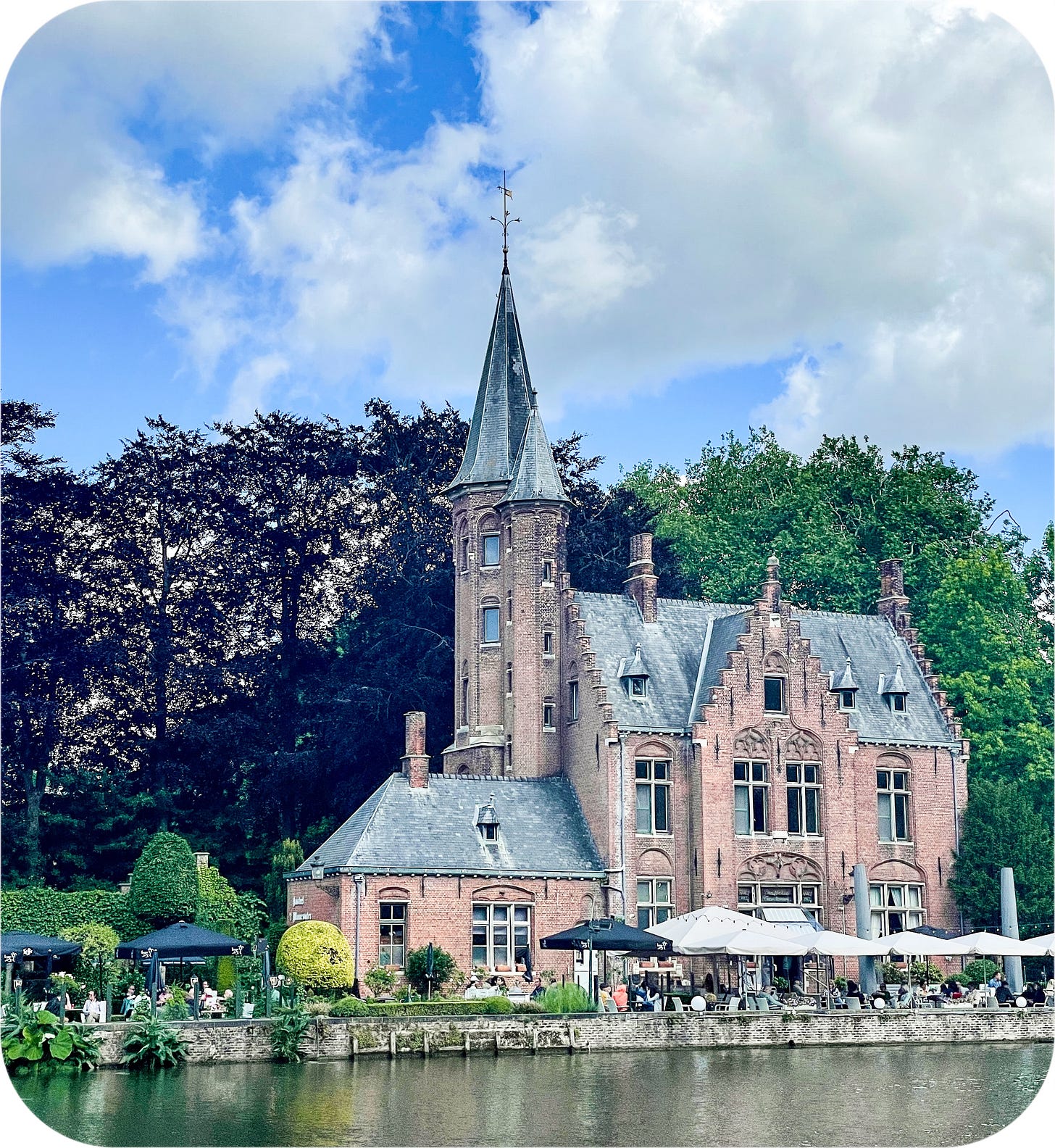
When I first saw the movie, I was pretty blown away b/c it was really good. Years later I rented it, and they had chopped out the part where someone (forget who-a couple?) goes to the top of the tower, and dies. The erosion of that scene made what came after less important or edgy, and I was really disappointed. Do you recall the scene where, I think Colin is on the street below and the couple goes up into the tower? Thanks for bringing up the movie. I forgot how good Fiennes was in it, until you related his dialogue on Bruges. Good post, Jodi!
Thank you Jodi. I adore Bruges and you truly do it justice.
Looking forward to more on Van Eyck...